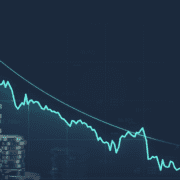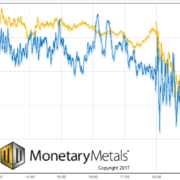Zombies Corporations are Slowly Devouring the Economy
I spoke with zombie firm researcher Max Goebel to breakdown his findings on the nature and consequences of zombie lending. Max is a PhD student in Economics at the University of Lisbon and his been studying what many researchers missed. Max helped answer some questions on zombie lending which have been haunting me. What is the definition of a zombie? Is the US in better or worse shape than the rest of the world? Can zombie corporations have spill over effects into healthy sectors of the economy? Below is our conversation edited for length and clarity. You can watch our podcast episode on zombie firms with Max and Keith here.
The Rise of The Zombie Firm
Ben: Let’s start off with the big picture. What are zombie firms and what is the rise of zombification associated with?
Max: The term “zombie” was first introduced to the academic literature by Caballero et al. (2008) in their analysis of Japan’s ”lost decade” of the 1990s and is often used to describe firms that are consistently unable to generate enough profits to meet their debt-servicing expenses.
The rise of zombies is often associated with weaknesses stemming from the financial sector (Andrews and Petroulakis, 2019). Weaker banks, overflowed with doubtful assets sunken into zombies, may have strong incentives to engage in debt evergreening practices, allowing them to roll over loans instead of writing them off.
Ben: Does this have any broader, long term implications, especially in regards to productivity growth in the healthy sectors of the economy? Zombies are definitely a scary sign but maybe if they stay far away from the brains we’re all set?
Max: These zombie-lending practices lead to a misallocation of capital within the corporate sector that keep unproductive firms afloat, discourages investment, and disrupts entry- and exit-dynamics – a mechanism called business dynamism, which is regarded as an engine of economic growth – within the economy (Hallak et al., 2018; Acharya et al., 2020).
The long-term consequences are lingering productivity growth and subdued economic development.
Especially in the United States, the ongoing productivity slowdown over the last decades is a much-discussed topic, and the literature sees zombie-lending and a zombification of the economy as an integral part of such dynamics (Caballero et al., 2008; McGowan et al., 2018).
Ben: So it seems zombies are dragging down the economy and business dynamism with them. Schumpeter would have hated these guys. How has the practice of zombie lending changed recently and what are concerns looking like post-pandemic?
Max: In the wake of the COVID-19 pandemic governments all around the world took unprecedented action to contain the spread of the disease. Many countries adopted strict lockdown policies that constrained firms in nonessential sectors to shut down completely. Policy responses designed to keep businesses afloat included public support on firms’ liquidity, such as wage bills and tax relief schemes, moratoriums on credit instalment payments, and credit guarantees. Although there is a large consensus about the need for measures that help flatten the curve of corporate insolvency of otherwise viable firms, there is increasing concern that such measures combined with ill-designed screening schemes might have allowed resources to flow into non-viable zombie firms. (Boddin et al. (2020)).
Ben: So these zombies are a drag on economic development and productivity growth but so are things like regulations and useless ingredients. Why are zombies worse than say your run of the mill tariff or supply shock?
Max: Well that’s because not only is zombie-lending regarded as a threat to long-term economic growth, it is also found to interfere with the efficacy of monetary policy in the short-run (Acharya et al., 2020).
US Zombie Firms vs Foreign Zombie Firms
Ben: I see. Raising interest rates is sure to start killing off some zombies, which will certainly mean pain for the economy and individuals. Higher rates makes debt service that much more unmanageable for these already struggling zombie firms. Here in the US the Fed has started their attempt at rate increases, so are zombies widespread here? Is Jerome Powell hunting for zombies with a shotgun when he should be using a sniper?
Max: Most of these insights are based on empirical evidence from Japan and Europe (Caballero et al., 2008; McGowan et al., 2018; Andrews and Petroulakis, 2019; Acharya et al., 2019). The United States had been overlooked for a long time. Only recently have some economists made the U.S. economy subject to their study of the zombie-phenomenon, finding stark differences with respect to evidence from Europe. Favara et al. (2022) and Göbel & Tavares (2022) find that zombie prevalence is not widespread, with the share of zombie-firms not exceeding 6%.
Ben: Ok but why is that the case? We always hear how the Fed is behind the 8-ball when it comes to problems like this but why are other countries worse?
Max: Institutional differences play a key role here. The academic literature cites higher efficacy of insolvency regimes in the United States than in Europe, where fewer bankruptcies result in a restructuring or reorganization (De Martiis et al, 2021). Furthermore, the European firms are still much more bank-dependent than their U.S. counterparts. Capital markets, and the bond market in particular, are a much more common source of refinancing for U.S. companies. This can be one explanation for why Favara et al. (2022) don’t see U.S. banks to engage in zombie-lending activities. Here, Göbel & Tavares (2022), however, find that negative spillovers do indeed also stem from lending-practices via the fixed-income market.
Ben: It seems we’re always overlooking these structural problems until it’s too late. It may be surprising to some that the US is in better shape than the rest of the world. Why is zombification different across the globe and who in particular are the main culprits of zombie lending?
Max: Evidence from European economies suggests that it is undercapitalized banks that are the dominating source of zombie-lending. In the case of the United States, Favara et al. (2022) do not find any evidence for this channel to exist. Yet, in their study on relationship lending and evergreening loans, Faria-e-Castro et al. (2022) report low-capitalized U.S. banks to predominantly engage in these practices, the recipients of which show zombie-like characteristics. These differing results are due to a common caveat in the studies on zombie firms: the classification of a firm as a zombie. Here, the academic literature still needs to converge on a unifying classification framework.
Ben: Good luck getting a convergence on zombies if we can’t even agree on whether we are in a recession or not. So let’s put a nice spin on your findings. It sounds like zombification is not a big deal in the US. No need to worry right? As long as the zombies stay relatively small the healthy sectors of the economy have no need to fear the walking dead?
Max: Despite the finding that zombification is not a widespread phenomenon, the U.S. economy is not exempt from zombie-lending practices. This may potentially have negative consequences for viable firms. Identifying such spillover effects is the subject of Göbel & Tavares (2022). Their general findings are more in alignment with the European case: zombie-lending imposes a drag on productivity, investment, and employment-growth of healthy firms. Yet, it is predominantly small- and medium-sized companies that fall victim to these lending activities. Moreover, they find evidence for increasing inflows of zombie-credit from the banking sector to interfere with an industry’s entry and exit dynamics, thus hampering the cleansing mechanism of the economy, which is supposed to foster economic growth.
Compared to the European case, however, the United States’ economy appears to be better shielded against a zombification and the resulting spillovers.
Ben: This seems to back up the Dollar Milkshake Theory we discuss often at Monetary Metals. The US economy and dollar are definitely problematic but other economies and currencies are in even worse shape. We also focus a lot of our research on the impacts that low interest rate environments have on markets and investors. What is the relationship between falling rates and zombies?
Max: This is another question that has been left unanswered by the academic literature regarding the role of the low interest rate regimes that have been prevailing on both sides of the Atlantic – and in Japan – since the Great Recession. A popular criterion for classifying zombies is their reception of subsidized credit, i.e. credit at interest-rates below those of the most creditworthy companies.
Some evidence on the German economy suggests that banks took indeed advantage of the ECB’s extraordinary monetary policy measures in the wake of the European Sovereign debt crisis and ramped up their exposure to non-viable firms (Bittner et al., 2021). One may conjecture that in the face of low interest rates, investors were desperate for yield and thus willing to lower their baseline level of risk aversion in order to find attractive opportunities in the lower tranches of the investment grade segment or even beyond.
The Positive Impacts of Zombie Firms
Ben: This is a pretty bleak picture you’re painting? Maybe tell me it’s not all bad?
Max: While the academic literature tells a pretty dire story about the zombie-phenomenon, it is not a one-way street. In the short-run, zombie-prevalence may actually be an appealing feature that comes in handy for elected politicians. Zombie firms employ workers, keeping the unemployment rate low and wages elevated. They are also found to reduce mark-ups, suppress market prices and even fight off inflationary pressure (Acharya et al., 2020).
Yet, the long-run costs of lower investment and productivity are stick to the short-run carrot.
Conclusion
Ben: So to wrap it all up in a nice, neat, undead bow: zombie corporations are a drag on the healthy sectors of the economy. They impede long-term economic growth, crowd out other investment opportunities, and hamper business dynamism. And they interfere with monetary policy, since they supply employment, wages and goods which get quickly decapitated when rates rise. But on the other hand if rates continue to fall then we create an ever increasing zombie horde that consumes precious capital and uses up productive resources. Spooky…
You can watch the full interview with Max, Ben, and CEO Keith Weiner here and read our research on zombies here.
References
Acharya, V., M. Crosignani, T. Eisert, and C. Eufinger (2020). Zombie Credit and (Dis-)Inflation: Evidence from Europe. Federal Reserve Bank of New York Staff Reports (955).
Andrews, D. and F. Petroulakis (2019). Breaking the Shackles: Zombie Firms, Weak Banks and Depressed Restructuring in Europe. Working Paper Series 2240, European Central Bank.
Bittner, C., Fecht, F., and Georg, C.-P. (2021). Contagious Zombies. Available at: https://papers.ssrn.com/sol3/papers.cfm?abstract_id=3829038.
Boddin, D., F. D’Acunto, and M. Weber (2020). Did Targeting Financial Constraints During COVID-19 Make Sense? Chicago Booth Research Paper.
Caballero, R., T. Hoshi, and A. Kashyap (2008). Zombie Lending and Depressed Restructuring in Japan. American Economic Review 98(5), 1943–77.
De Martiis, A., Heil, T.L.A., and Peter, F.J (2021). Are you a Zombie? A Supervised Learning Method to Classify Unviable Firms and Identify the Determinants. Available at: https://papers.ssrn.com/sol3/papers.cfm?abstract_id=3625473.
Faria-e-Castro, M., Paul, P., and Sánchez, J.M. (2022). Evergreening. Available at: https://papers.ssrn.com/sol3/papers.cfm?abstract_id=3951635.
Favara, G., M. Camelia, and A. Perez-Orive (2022). Zombie Lending to U.S. Firms. Available at SSRN: https://papers.ssrn.com/sol3/papers.cfm?abstract_id=4065886.
Göbel, M. and Tavares, N. (2022). Zombie-Lending in the United States: Prevalence versus Relevance. Available at: https://arxiv.org/abs/2201.10524.
Hallak, I., P. Harasztosi, and S. T. Schich (2018). Fear the Walking Dead?: Incidence and Effects of Zombie Firms in Europe. Publications Office of the European Union.
McGowan, M., D. Andrews, and V. Millot (2018). The Walking Dead? Zombie Firms and Pro- ductivity Performance in OECD Countries. Economic Policy 33(96), 685–736.
Storz, M., M. Koetter, R. Setzer, and A. Westphal (2017). Do We Want These two to Tango? On Zombie Firms and Stressed Banks in Europe. Working Paper 2104, European Central Bank.
Make sure to subscribe to our YouTube Channel to check out all our Media Appearances, Podcast Episodes and more!
Additional Resources for Earning Interest on Gold
If you’d like to learn more about how to earn interest on gold with Monetary Metals, check out the following resources:
In this paper we look at how conventional gold holdings stack up to Monetary Metals Investments, which offer a Yield on Gold, Paid in Gold®. We compare retail coins, vault storage, the popular ETF – GLD, and mining stocks against Monetary Metals’ True Gold Leases.
The Case for Gold Yield in Investment Portfolios
Adding gold to a diversified portfolio of assets reduces volatility and increases returns. But how much and what about the ongoing costs? What changes when gold pays a yield? This paper answers those questions using data going back to 1972.











Leave a Reply
Want to join the discussion?Feel free to contribute!